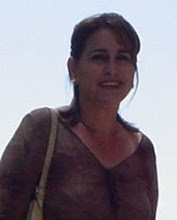
In Cuba, June 1st is a special day of celebration, as children are our greatest wealth.
In December 1954 the General Assembly of the United Nations (UN) decided to hold an annual International Day of Children, understanding and brotherhood among all children in the world, on the date that each nation decided, and Cuba chose the first of June.
While millions of children around the world have nothing to put in their mouths and die prematurely from preventable diseases, in Cuba, the socialist Revolution allocated considerable resources to promote healthy childhood and the basic conditions for its development.
In this country, the children's rights are respected, they have the privilege of playing, walking freely through the streets and parks without fear of being assaulted or attacked by murderers and psychopaths as it happens in other countries. The have the right to go to school grouped in student organizations, where they realize their expectations. This is the only country where children do a conference (the student congress), where children do not have to demand their rights, do not speak on children living badly or begging on the streets or many other daily horrors, but speaking about achievements, determination, solidarity and continuity of the Revolution.
Here, free vaccination campaigns are carried out each year, not because their going to die because of a pandemic, but because they have the right to health. Our children are protected against 13 preventable diseases.
Since 2002, UNICEF globally recognized Cuba's experience in providing education at early ages, through the program "Educate your Child, and Day Care Centers." The legislation created legal basis for protecting the family and especially for mothers and children, from the maternity. The Family, Labour, Children and Youth Code, Primary Health Care, low infant mortality rates are an expression of state policy, found in the Constitution of the Republic.
Cuba clearly shows that there is no need to be a rich country to provide protection and social welfare to children. Unfortunately, few countries are striving to guarantee the rights of children. The terrible reality of childhood, even in developed countries, is very different. Currently 600 million children worldwide live in poverty, 250 million between 5 and 14 work in Third World countries, 130 of these receive no education and six million suffer limiting injuries caused by war or armed conflict. Every 24 hours, 8 500 boys are infected with AIDS.
I only wish that children around the world be so happy as Cuban children.






